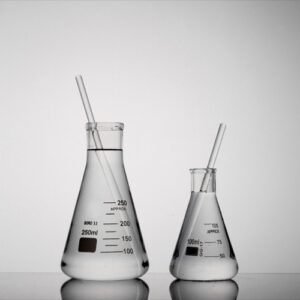Polyvinylidene difluoride, commonly known as PVDF, is a polymer that has gained immense popularity and utility across various industries due to its exceptional versatility. In this extensive article, we will explore the myriad features and properties that make PVDF stand out as a versatile polymer. From its chemical structure to its diverse applications, you will gain a comprehensive understanding of what makes PVDF an indispensable material in the modern world.
Kimia PVDF
PVDF is a semi-crystalline thermoplastic polymer derived from vinylidene fluoride monomers. Its molecular structure is characterized by a repeating unit of CH2 and CF2 groups, resulting in a polymer with unique chemical properties. Let’s delve deeper into the chemistry of PVDF before we explore its versatility.
The Composition of PVDF
The chemical formula of PVDF is (C2H2F2)n, where ‘n’ represents the number of repeating monomer units. This formula reveals the presence of carbon (C), hydrogen (H), and fluorine (F) atoms in PVDF’s molecular structure. It is this specific arrangement of atoms that imparts PVDF with its extraordinary attributes.
Versatility Through Unique Properties
PVDF’s versatility stems from a combination of remarkable properties, making it suitable for a wide range of applications across diverse industries. Let’s explore these properties in detail:
1. Ketahanan Kimia
PVDF exhibits exceptional resistance to a broad spectrum of chemicals, including acids, bases, solvents, and corrosive substances. This property makes it an ideal choice for equipment and components in chemical processing industries.
2. Stabilitas Termal
With a high melting point of approximately 170°C (338°F) and a continuous service temperature of up to 150°C (302°F), PVDF remains stable in high-temperature environments, ensuring its reliability in various applications.
3. Insulasi listrik
PVDF offers outstanding electrical insulation properties, with a low dielectric constant and low dissipation factor. This makes it a preferred material for insulating wires, cables, and electronic components.
4. Tahan UV
PVDF is resistant to ultraviolet (UV) radiation, making it a durable choice for outdoor applications. It maintains its structural integrity and aesthetics when exposed to sunlight, making it suitable for architectural cladding and solar panels.
5. Kekuatan Mekanik
PVDF possesses excellent mechanical strength, including high tensile strength and impact resistance. This property allows it to withstand harsh mechanical conditions, making it suitable for use in structural components.
6. Koefisien Gesekan Rendah
PVDF’s low coefficient of friction makes it an excellent choice for applications where reduced friction is essential, such as bearings, seals, and sliding components.
7. Tahan Api
PVDF is inherently flame-resistant, self-extinguishing when the flame source is removed. Its high limiting oxygen index (LOI) further enhances its flame resistance.
8. Biokompatibilitas
PVDF is biocompatible and can be used in medical devices without causing adverse reactions in the human body. It is employed in applications such as catheters and prosthetic implants.
Aplikasi di Seluruh Industri

PVDF’s versatility and unique properties have led to its integration into various industrial sectors. Here are some notable applications:
Pengolahan Kimia
PVDF is used in the construction of chemical tanks, pipes, valves, and other equipment due to its exceptional chemical resistance.
Electrical and Electronics
The electrical insulation properties of PVDF make it valuable in the manufacturing of wire insulation, capacitors, connectors, and other electronic components.
Architecture and Construction
PVDF-coated aluminum panels are utilized in building facades, roofing, and cladding due to their UV resistance and aesthetic appeal.
Minyak dan gas
PVDF digunakan di anjungan lepas pantai, jaringan pipa, dan komponen pompa karena ketahanan terhadap korosi dan daya tahannya.
Luar angkasa
PVDF digunakan pada komponen pesawat terbang, seperti saluran bahan bakar dan insulasi, karena sifatnya yang ringan dan tahan api.
Medis
PVDF dapat diterapkan pada perangkat medis seperti kateter, implan prostetik, dan instrumen bedah karena biokompatibilitasnya.
Pertanyaan yang Sering Diajukan (FAQ)
Let’s address some common questions about the versatility of PVDF:
Q1: What industries are currently exploring new applications for PVDF?
Industries such as renewable energy, automotive, and semiconductors are continually discovering innovative ways to incorporate PVDF into their processes and products.
Q2: Is PVDF recyclable?
Ya, PVDF dapat didaur ulang, dan dapat diproses serta digunakan kembali dalam berbagai aplikasi, sehingga mengurangi limbah dan dampak terhadap lingkungan.
Q3: What are the limitations of PVDF?
PVDF memiliki ketahanan terbatas terhadap radiasi energi tinggi dan dapat menurun bila terkena radiasi UV dalam waktu lama pada suhu tinggi.
Q4: How does PVDF compare to other polymers like PTFE?
While both PVDF and PTFE are fluoropolymers, they have distinct properties. PVDF offers better mechanical strength and is easier to process, while PTFE has superior chemical resistance and a lower coefficient of friction.
Q5: Apakah PVDF cocok untuk pencetakan 3D?
Ya, PVDF dapat digunakan untuk pencetakan 3D, khususnya pada aplikasi yang memerlukan ketahanan terhadap bahan kimia dan kekuatan mekanik.
Kesimpulan
Polyvinylidene difluoride (PVDF) is undeniably a versatile polymer, celebrated for its exceptional properties and wide-ranging applications. From chemical processing to aerospace, from electronics to medical devices, PVDF’s unique combination of chemical resistance, thermal stability, electrical insulation, and more continues to drive innovation across industries. As technology advances and industries evolve, PVDF stands as a testament to the ingenuity of material science, offering solutions to complex challenges and enabling progress in countless applications.



